Your guide to free and low-cost camping in Australia
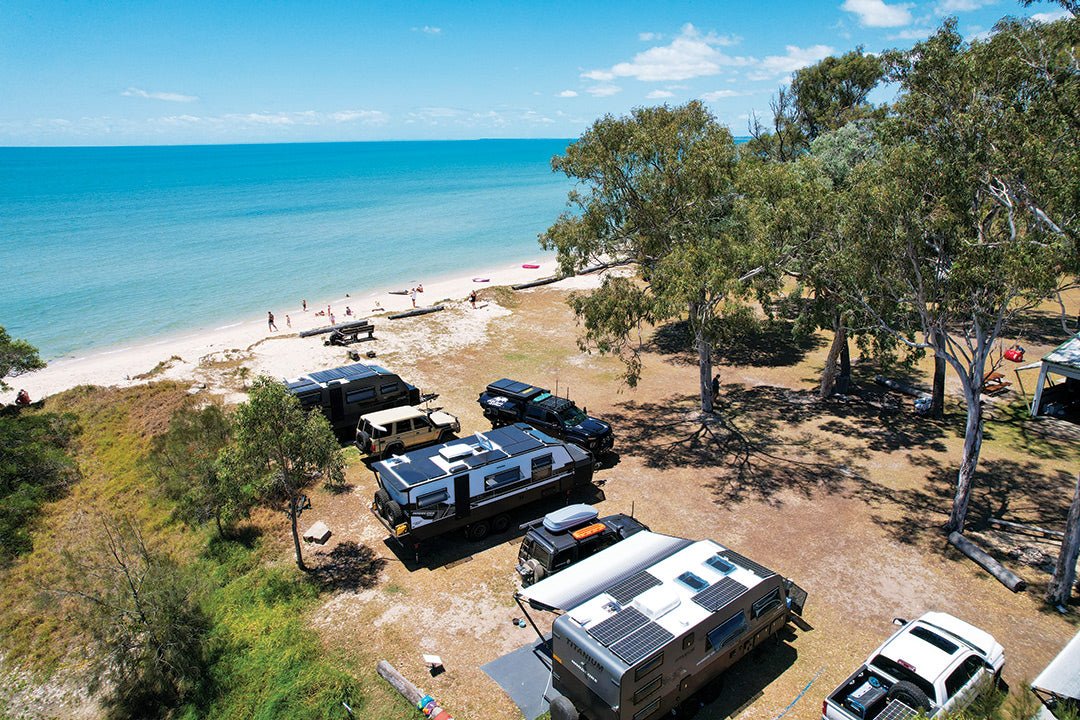
Home is where you park it, and that’s not always at a caravan park. Discover the benefits of free and low-cost camps, how to find them, and why they’re becoming so popular.
It’s New Year’s Day in Victoria. The skies are clear, the temperature is nudging 36°C and the state has eased into a soporific post-Christmas haze. If you haven’t booked a caravan park site months in advance, you can forget about parking up beachside, riverside or anywhere sought after for a relaxing summer jaunt. If you do nab a spot, chances are you’ll be sharing it with every man and his (strictly on-lead) dog.
But if you want more flexibility with your vanning adventures and not wake up to the smell of someone else’s breakfast, there is another way. Last January, my family and I booked a Hipcamp in Victoria’s lush Yarra Valley. We hitched up on New Year’s Day, coasted through bucolic wine country on Melbourne’s eastern fringe, and were rolling out the awning to birdsong an hour later. Our site was on a hillside surrounded by native forest, with valley views and no neighbours within 30 metres. There were amenities on site, as well as a covered barbecue area, recreation lawn, wood-fired spa and, the pièce de résistance, a large natural swimming pool replete with lily pads, dragonflies and darting fish. By day, we swam and lazed in the sun, and at night we watched the moon rise over the mountains and sipped wine by the campfire.
Hipcamp — the Airbnb of camping — has opened up pockets of private property to campers across Australia and, together with low-cost campgrounds and free camps, is providing an alternative to traditional caravan parks. As caravans become more sophisticated, with increased capacity to stay off-grid for longer, some caravanners are opting for no-frills self-contained stays over bells-and-whistles holiday parks. For some, that means parking up behind a country pub (buying a counter meal is a courtesy), overnighting at a roadhouse or council-managed showgrounds, booking a campsite in one of Australia's national parks, or unhitching at a free camp in state forest. Some of our fondest campsites have been on the beach at South Lefroy Bay at Ningaloo in Western Australia, free camping at Moonlight Bay on the Eyre Peninsula in South Australia and pulling up by Karlu Karlu / Devils Marbles in the Northern Territory.
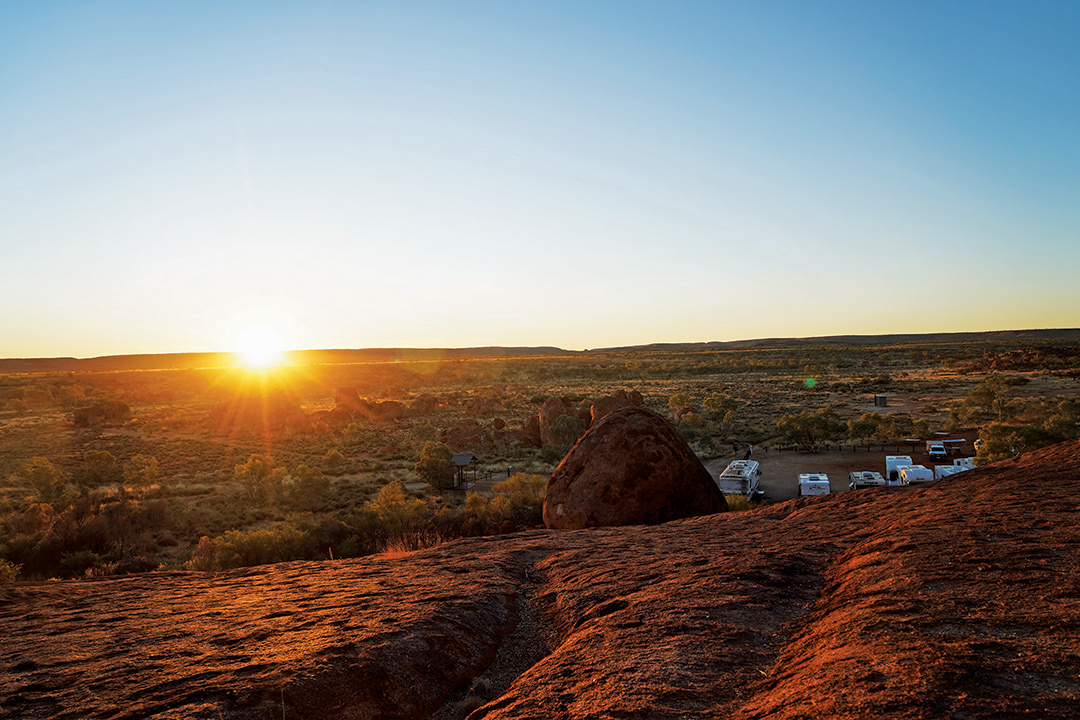
Vanning on a budget
With the skyrocketing cost of living, it can pay to think outside the box when considering where to park your, ahem, box on wheels. Finding non-traditional campsites is made easy with platforms like WikiCamps, which features more than 10,000 campgrounds around Australia, and Hipcamp, which has a database of 40,000 sites, bookable for an average cost of $27 a night for four people.
Caravanners Alysse Gallagher (of onefinevan.com) has been on the road with her family of four for 15 months, and she says that while suitable free camps can be hard to come by, low-cost campgrounds are a good money-saving alternative.
“We have a very capable off-grid caravan with lots of battery and water [storage], so as much as possible we try and stay in national parks or Hipcamps,” Alysse says. “We do stay in caravan parks but they’re not our first pick — they tend to be a lot more expensive and there’s a lot less space and privacy. The whole point for us is to try and get away from the crowds a little bit.”
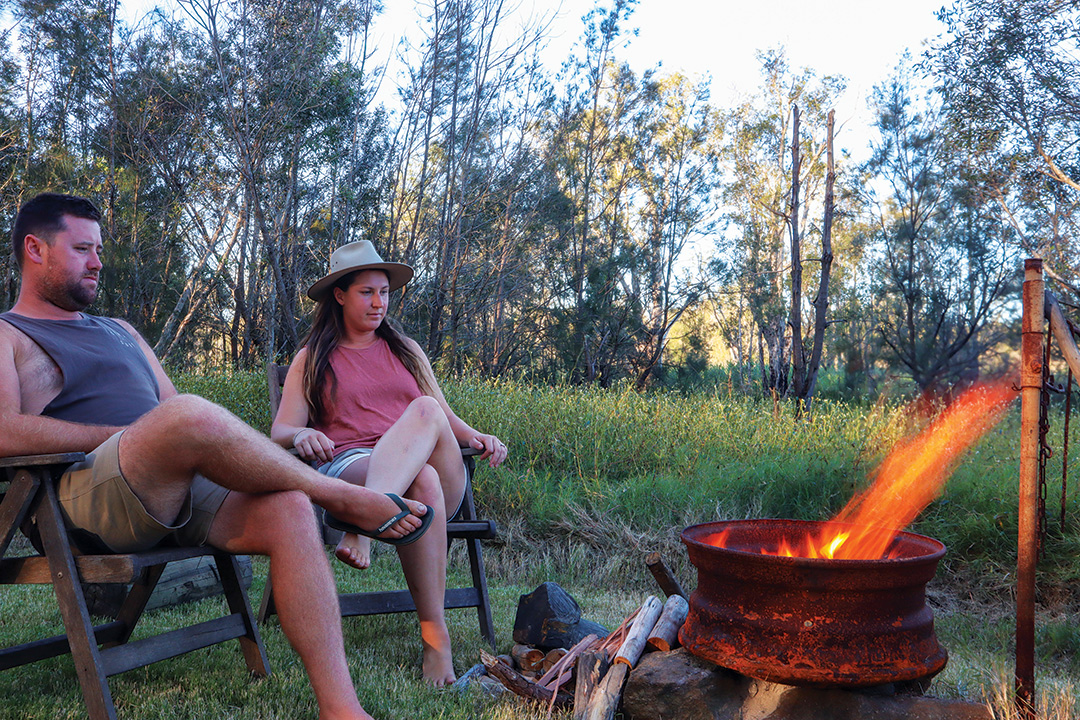
Every Australian state and territory has campsites available in national and state parks for either no charge or a small fee. In Western Australia, demand for Parks and Wildlife Service-managed campsites has increased an average of 15 per cent a year for the past five years. Sites go on sale 180 days in advance and the competition to nab a spot at prime picks, such as Osprey Bay on the Ningaloo Coast and Lucky Bay near Esperance in Western Australia, is notoriously fierce.
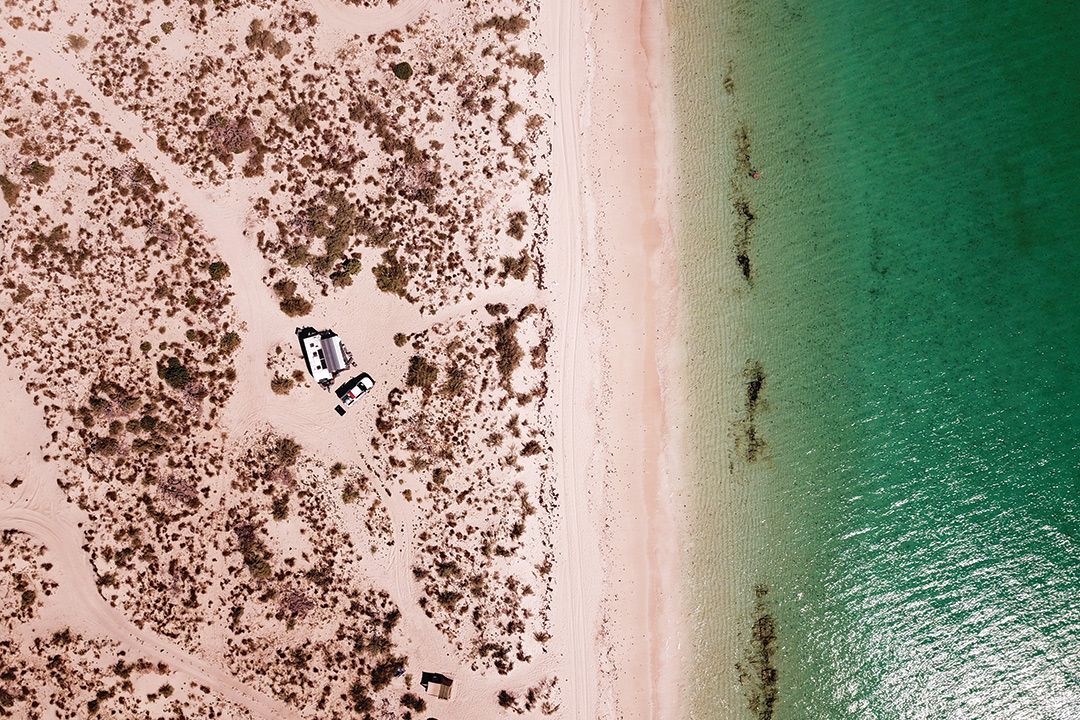
In 2022, the Northern Territory introduced a booking system for campgrounds in popular national parks like Litchfield and Leliyn (Edith Falls) in Nitmiluk; and the Victorian government released more than 400 camping areas on Crown river frontages. While they are all free (together with almost 1200 Parks Victoria sites), most are not accessible to vehicles. All 570 camping areas managed by the Queensland Parks and Wildlife Service on the mainland attract fees; in South Australia most (148 out of 155) require payment, starting at just $11 a night; while more than half of the 365 campgrounds managed by the New South Wales National Parks and Wildlife Service are free. Head to the relevant national park websites to find out more about the campsites on offer.
When it comes to free campsites in bucket-list destinations, Tasmania takes the cake. The string of free camps along the Bay of Fires on the east coast are legendary and ideal for a road trip adventure. Here, you can park up behind the dunes and have easy access to the beach’s sugar-white sand and fiery-orange boulders. The downside? There’s no booking system and no guarantee of a site. This can cause headaches for caravanners, especially those with big rigs travelling during the peak times such as the summer months and during school holidays. The nearby town of St Helens helps absorb the overflow by allowing overnight camping at the recreation ground, a practice embraced by many regional and local councils around the country.
The free-camp gamble
The other downside of free and low-cost camping is site suitability. Free campgrounds can have poor access, with narrow, gravel roads punctuated by sharp bends, low-hanging trees and other obstacles. Sites are often undefined and uneven, presenting challenges when trying to park and manoeuvre a large caravan. If there are no suitable sites available (not helped by inconsiderate campers who spread out), you need to be confident you can turn around, lest you find yourself trapped on a dead-end track. There is a series of free beach camps along Victoria’s Gippsland coast, but we are reluctant to venture there during peak periods with a hefty 22ft caravan in tow.
Another drawback is facilities. While paid campgrounds generally have toilets and potentially hot showers and a camp kitchen, many free camps and low-cost sites have no toilet facilities, access to potable water and only unpowered sites available. This means campers need to have a fully self-contained vehicle and come prepared. If the sun is shining and you've got solar panels handy, power won’t be a problem. Fresh water will be the biggest limitation to your length of stay, followed by toilet capacity — especially if you’re a family travelling with a single-cassette chemical toilet. While some Hipcamps, like our Yarra Valley stay, have full facilities, many offer little more than a patch of grass.
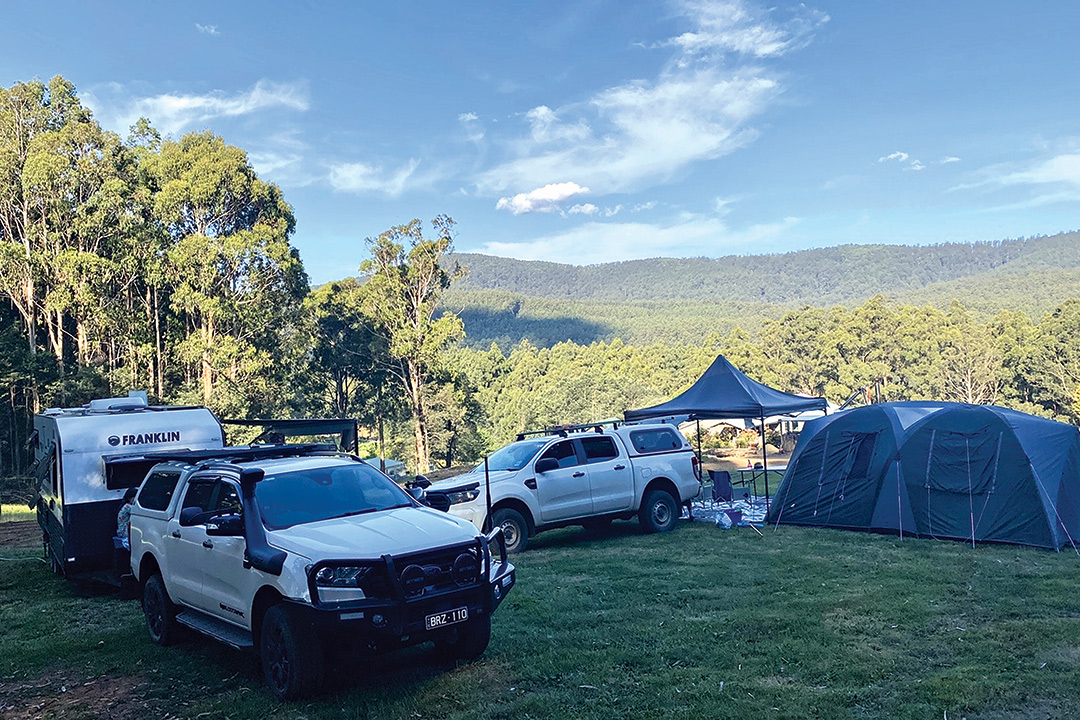
Hipcamp for the win
One of the best things about Hipcamp stays is you can book ahead, filter by facilities and know exactly what you are going to get before you arrive (the hosts will help with any questions if you are unsure about dragging your on-road tourer through a muddy paddock). The Hipcamp online platform enables users to tap into truly unique stays, whether that’s a site at an outback beach camp near Darwin, by a babbling stream in the Victorian High Country, on a Queensland cattle station, or at a camel farm in South Australia.
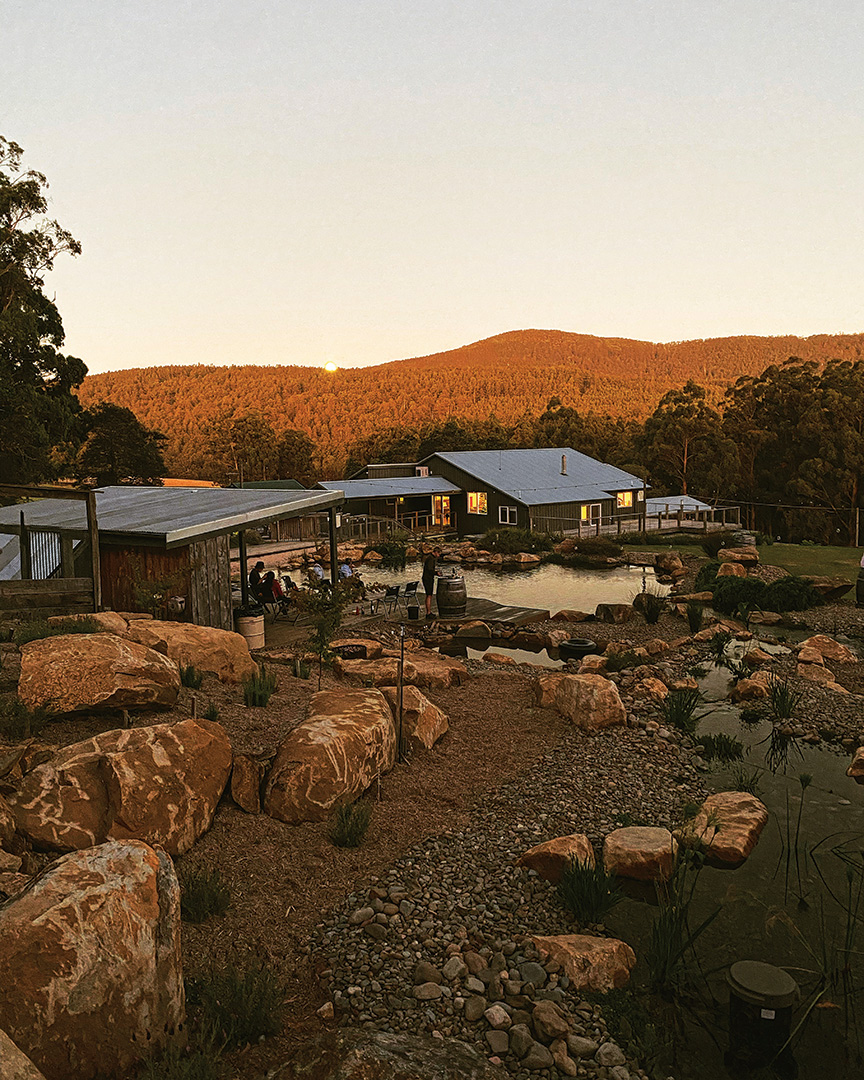
“We've seen significant growth in both Hipcamper and host numbers,” says Hipcamp spokesperson Brook Wood, citing the pandemic and cost-of-living pressures for the platform’s growing popularity. “We've seen a huge shift in back-to-basics low-cost holiday options; people are rediscovering their own backyards.
“We're also seeing a lot of Australians living out their dreams of doing the lap, so Hipcamps are an appealing way to experience unique Australia outside of a traditional campground or holiday park.”
Melburnians Miriam and Doug Blaker hit the road during the pandemic and have been travelling full-time in their Jayco Journey for almost a year. They have stayed in fewer than a dozen caravan parks during that time. “Caravan parks, to me, can feel a bit like camping suburbia — regimented and confined,” says Miriam, a regular contributor to Caravan World. “I love the freedom and flexibility of free and low-cost camping. We love being able to adapt our plans and being spontaneous in our travels. Being able to set up in a scenic spot in our own space, being able to get off the beaten track and find those hidden gems. Obviously reducing costs is a major factor too.”

Alysse, originally from Newcastle in NSW, is travelling full-time in a Titanium triple-bunk caravan with her husband Oscar and kids, Adaline (five) and Fergus (three). Equipped with a 400Ah lithium battery and 300L water tank, the Gallaghers usually opt for secluded stays where they can roam with their kids. “Something close to the beach, something surrounded by bush or nature so we can explore and also just feel like we’re immersed in nature,” Alysse says of their ideal campsite.
For some caravanners, the experience of Hipcamping has inspired them to become Hipcamp hosts themselves. Andrew Collard listed his 26-hectare hobby farm at Steels Creek, northeast of Melbourne, in 2022 after trying out a few Hipcamps in Queensland. His campground, Eagle Ridge, is at the top of a hill grazed by a flock of 30 sheep and boasts 360-degree views. For $35 a night, self-contained campers get a hobby farm experience where they can camp in private with their dog (on-lead) and enjoy a campfire (fire restrictions permitting). Andrew might even bring you half a dozen freshly laid eggs in the morning. Travellers use his property as a base for exploring Melbourne, to test out their setup, or simply to escape the big smoke for a weekend.
“People, I think, are looking for a real camping experience — off-grid, being able to feel like they’re camping, have a open fire, have a bit of space — you generally don’t get that at a caravan park,” Andrew says.
One of our favourite local Hipcamps is Mt Martha Bushland Hideaway Camping on Victoria’s Mornington Peninsula. Nestled in bush a short drive (five minutes) from the beach, the property has three sites set by a wetland (the brave can swim), as well as a giant swing and a menagerie of animals, including sheep, guinea pigs and peacocks. During our visit the kids disappeared for hours, playing with guinea pig pups inside a massive aviary while we sat around the campfire strumming a guitar with our neighbours.

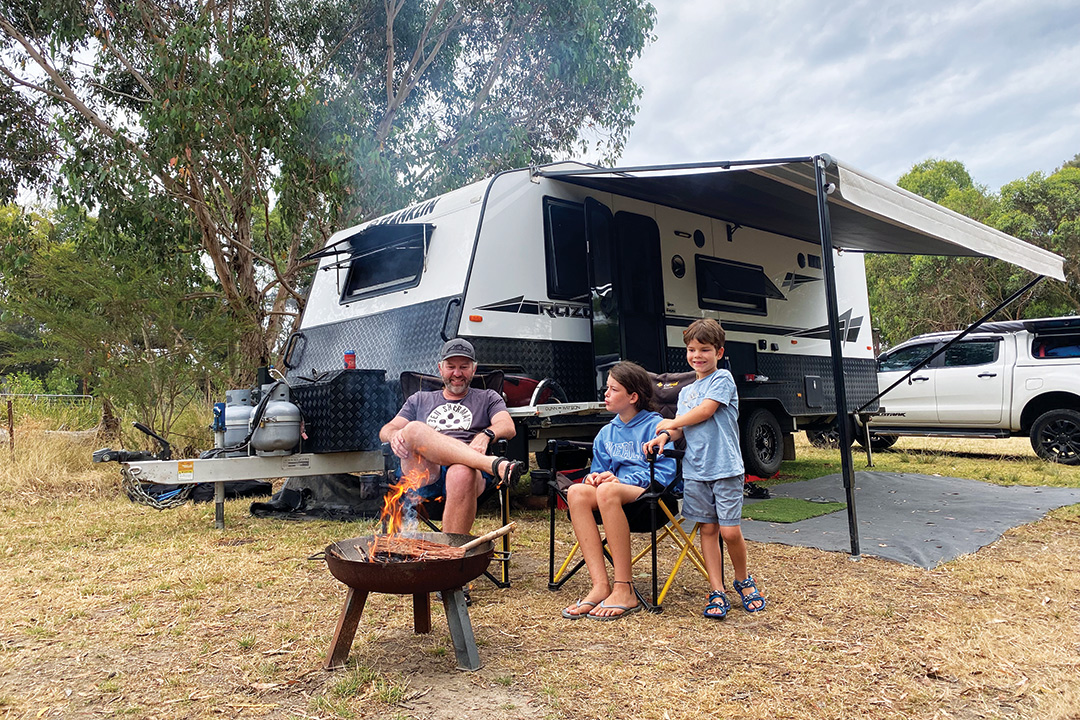
“We love to share our property with the outside world,” says host Leeanne O'Connor has welcomed about 370 groups of guests since listing her property in March 2021. “When we bought our five acres (two hectares) in 1997, there wasn’t a single tree on our place and since then we have turned it back into native bushland. It seems a waste not to share that with other people who love to camp but want to have an experience that is not like staying in a crowded caravan park … We get to meet all sorts of lovely people.”

Catherine Best is an award-winning travel writer and author of Ultimate Caravan Trips: Australia
THE NEXT STEP
Are you ready to experience the freedom of the open road? Don't wait - Find your dream getaway now!
RELATED ARTICLES:
Wilsons Promontory, Vic: The best things to see and do







